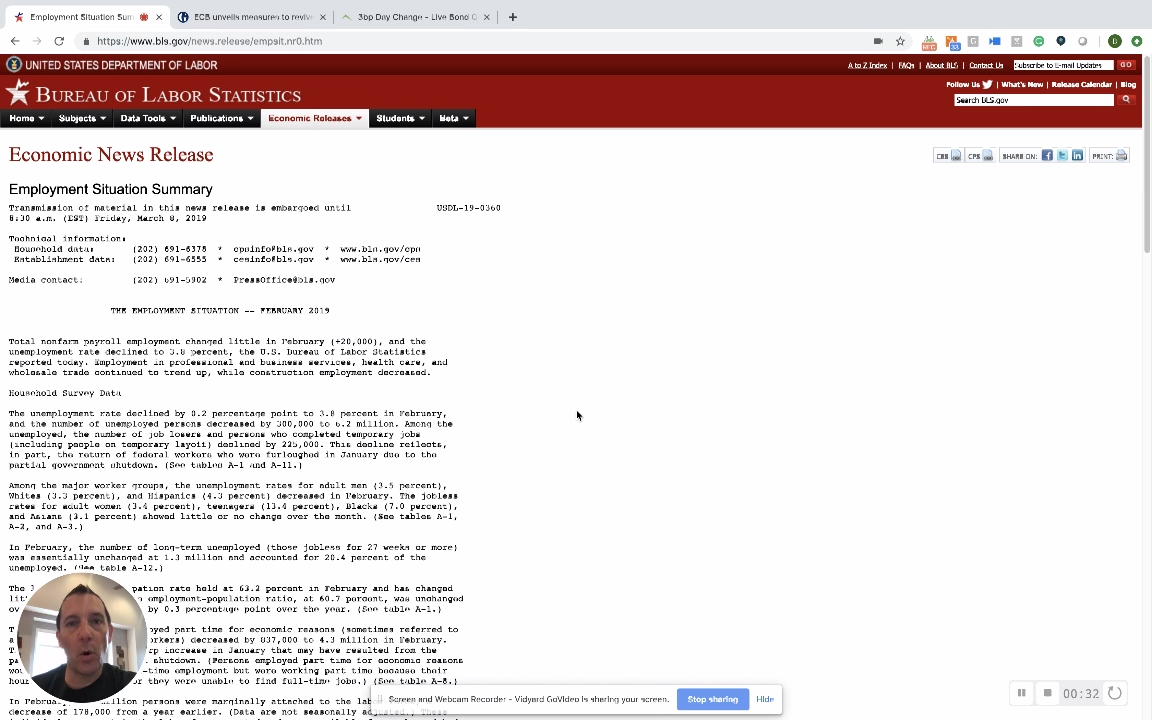TRENDING WHITEPAPERS,VIDEOS & MORE

matt
Buyers Gaining Power in West Coast Housing Markets
- Friday, 08 March 2019

Limited inventory and rapid price appreciation have kept sellers firmly in the driver's seat for several years as the United States recovered from the housing market collapse--but that appears to be changing.
In 20 of the 35 largest metros, market conditions favor buyers more than they did a year ago, according to the Zillow Buyer-Seller Index. It is based on the share of listings with a price cut, how long it takes to sell a home, and the sale-to-list price ratio. By comparing each metro across time, this analysis shows whether the market is cooler (favoring buyers) or hotter (favoring sellers) than it was in the past.
California markets have seen the biggest shift toward buyers since last January, led by San Jose, which has seen the most significant swing. San Francisco, San Diego, Los Angeles and Denver round out the top five markets where buyers will have an easier time navigating the market than they would have in recent years.
Even though San Jose and San Francisco have cooled exceptionally, they are still the hottest markets compared with others around the country, markets where listings see few price cuts, homes don't stay on the market for long, and sale-to-list price ratios are higher. In these two Bay Area markets, home prices are so prohibitive, the typical buyer must put more than a 20 percent down to keep mortgage payments at or below 30% of monthly household income.
[adbutler zone_id="326324"]
[adbutler zone_id="326327"]
San Jose buyers would need a 49 percent down payment, or $614,100, nearly three times as much as the national median home value. Buyers in San Francisco (43 percent), Los Angeles (43 percent) and San Diego (31 percent) would also need to put down more than 20 percent.
"It is no surprise that the markets which pushed the bounds of affordability over the housing recovery are now experiencing significant cooling," said Skylar Olsen, Zillow Director of Economic Research. "As down payments and mortgage payments far outpaced incomes, buyer demand eventually exhausted itself. Those buyers looking in cooling markets will likely welcome the relief, although the entry price is still high. Inventory is returning and spending more time on market, meaning their decision making can be made with a cooler head."
While some of the hottest markets slowed down over the past year, others have become more seller-friendly. Miami, which tends to see large fluctuations, has seen the biggest overall shift toward favoring sellers over the past year, with homes selling about a week faster than they did a year ago.
Markets That Have Cooled
| Metro | Median Home Value |
Listings with a Price Cut |
Sale-to-List Price Ratio |
Days on Market |
| San Jose, CA | $1,245,800 | 15.3 | 97.2% | 61 |
| San Francisco, CA | $957,400 | 11.5 | 98.6% | 57 |
| San Diego, CA | $591,400 | 21.3 | 95.7% | 75 |
| Los Angeles-Long Beach-Anaheim, CA | $652,300 | 17.4 | 97.1% | 75 |
| Denver, CO | $405,300 | 18.1 | 97.2% | 65 |
| Dallas-Fort Worth, TX | $242,600 | 19.9 | 96.9% | 71 |
| Seattle, WA | $489,700 | 15.2 | 96.6% | 77 |
| Sacramento, CA | $408,700 | 17.3 | 96.9% | 67 |
| Portland, OR | $397,300 | 18.8 | 96.8% | 80 |
| Riverside, CA | $367,100 | 17.5 | 96.7% | 83 |
| Las Vegas, NV | $277,900 | 22.8 | 96.9% | 69 |
| Charlotte, NC | $206,200 | 16.8 | 96.9% | 71 |
| Tampa, FL | $213,600 | 23.2 | 95.6% | 75 |
| San Antonio, TX | $192,800 | 20.0 | 98.6% | 77 |
| Austin, TX | $308,200 | 19.1 | 95.1% | 74 |
| Kansas City, MO | $191,600 | 14.5 | 98.2% | 66 |
| Boston, MA | $467,000 | 15.5 | 97.1% | 74 |
| Chicago, IL | $224,800 | 18.2 | 94.2% | 102 |
| Columbus, OH | $189,900 | 16.5 | 96.6% | 71 |
| Atlanta, GA | $217,500 | 16.1 | 97.0% | 77 |
Markets That Have Heated Up (Ranked By Biggest Increase)
| Metro | Median Home Value |
Listings with a Price Cut |
Sale-to-List Price Ratio |
Days on Market |
| Miami-Fort Lauderdale, FL | $283,800 | 16.7 | 93.9% | 99 |
| Houston, TX | $205,500 | 19.4 | 94.8% | 89 |
| Pittsburgh, PA | $143,900 | 16.8 | 93.7% | 87 |
| Philadelphia, PA | $232,700 | 17.9 | 95.7% | 90 |
| St. Louis, MO | $167,000 | 16.1 | 95.7% | 76 |
| Cincinnati, OH | $168,900 | 15.7 | 95.6% | 74 |
| Cleveland, OH | $145,600 | 15.5 | 94.5% | 82 |
| Phoenix, AZ | $264,900 | 19.2 | 97.4% | 61 |
| Detroit, MI | $160,000 | 17.5 | 94.7% | 78 |
| Indianapolis, IN | $163,900 | 17.9 | 97.0% | 70 |
| Orlando, FL | $237,100 | 20.4 | 95.8% | 84 |
| Baltimore, MD | $267,900 | 19.2 | 96.4% | 97 |
| New York, NY | $438,300 | 14.6 | 95.7% | 132 |
| Washington, DC | $406,200 | 14.8 | 97.4% | 82 |
| Minneapolis-St Paul, MN | $268,100 | 14.4 | 97.1% | 74 |
Bill Bodnar with the Mortgage Market Guide Recap: March 8
- Friday, 08 March 2019

https://youtu.be/jIBKEmo8o58
Hi, Bill Bodnar here with the Mortgage Market Guide recap.
So, mortgage backed securities and the financial markets are reacting to the jobs report that came out today.
The headline number was a bit of a stinker, only 20,000 jobs created. That was well below expectations of 175,000 jobs. But when you took a closer look under the hood there were some upward revisions to the previous month, which was positive.
We also watched the longest one month decline in total unemployment. That number was over 8% and that dropped to 7.3%, so that was a very positive sign. And then hourly earnings, something we've been watching very carefully, are rising steadily. They rose by four-tenths, which is a big month increase, and that left year-over-year wages at 3.4%.
[adbutler zone_id="326324"]
[adbutler zone_id="326327"]
So, that's a great sign. That's the hottest wage gain in 10 years. That's a really positive sign.
We are watching bonds basically touching the same highs we were at the last time these job reports came out. We are at a level of resistance, but you can notice a little trend higher. Why? What was the catalyst for the bond market to kind of recover after the losses we had in the previous week?
And what we're seeing here is that ECB slashed their growth for the future, so they're showing growth coming in at 1.1%, where original forecasts were at 1.7%. And that's a significant down grade.
The other thing we are looking at as well is that inflation has been trending low. And inflation is the driver of interest rates. When inflation abroad gets depressed, we actually import it. It washes on to our shores. We're seeing yields across the globe compress--or come down.
And that is coming back to us and we're seeing the 10-year yield back at like a 2.65%, or so, and we're watching our bonds at one-year highs.
A couple of numbers that I would leave you with for the weekend: No.1 in order for the bond market to get better and see better rates, we are going to need to see prices break above this ceiling. This ceiling coincides with about 2.6% on the 10-year notes, so if you're tracking the 10-year note, we're looking at 2.6% on the 10 year note as a real level we need to bust below.
To see rates get much, much better. In the stock market, we're watching the S&P 500 closely right now. It's trading beneath its 280-day moving average at 2,750. We do not want to see that stay under 2,750 for long, because if it does, that could lead to more selling. And that money could find its way into the bond market, and we could see lower rates ahead.
So, all in all, an OK jobs report. The hourly earnings was very positive. That's a great number for housing overall.
And one last thing I'll leave you this, we are watching--what we call- a golden cross--which happened back in February. And that usually says, "That better prices are ahead.” And isn't it funny that we are testing the best levels of the year.
If we move a little bit higher, things will be even higher in the weeks ahead.
Read more...Millennials’ Appetites for Refinances Grow, as Rates Decline
- Wednesday, 06 March 2019

Millennials took advantage of slightly lower interest rates in January to refinance their mortgages. Refinances by Millennial borrowers accounted for 13 percent of all closed loans, the highest percentage since February 2018, according to the “Ellie Mae Millennial Tracker.”
Also, refinances climbed to 35 percent of closed loans in January, up from 29 percent in December of 2018, according to the January “Origination Insight Report” from the company, which explores trends among borrowers of all ages.
[adbutler zone_id="326324"]
[adbutler zone_id="326327"]
Refinances also made up a larger share of each type of loan in January. Refinances for Conventional loans for Millennial borrowers rose to 14 percent, up from 11 percent in December, while Federal Housing Administration refinances rose to 7 percent in January, from 6 percent. During that same time period, Veterans Affairs refinances rose to 35 percent, up from 27 percent the month prior.
[caption id="attachment_9345" align="alignleft" width="200"] Joe Tyrrell[/caption]
Joe Tyrrell[/caption]
“With average interest rates slightly falling in January, Millennials took advantage of refinance opportunities,” said Joe Tyrrell, executive vice president of strategy and technology at Ellie Mae. “While we continue to see Millennials enter the housing market and exercise their purchase power, the uptick in refinances may indicate maturity among this generation who previously purchased a home and are looking for an opportunity to take advantage of lower monthly interest payments.”
In January 2019, the average Millennial primary borrower refinancing their home was 33 years old, with a FICO score of 728. Two-thirds of those who refinanced were married (66 percent) while one-third were single (33 percent), and one percent were unspecified. Additionally, the majority of primary borrowers who refinanced were male (63 percent).
Other key findings from the January 2019 Ellie Mae Millennial Tracker include:
- The share of conventional loans increased to 69 percent of all closed loans, slightly up from 68 percent the month prior, while Federal Housing Administration loans held steady at 27 percent from December.
- The average FICO score of Millennial borrowers who closed on loans in January increased slightly to 722, up from 721 in December.
- The top five markets for Millennial borrowers in January were Warrensburg, Mo.; Somerset, Pa.; Ottumwa, Iowa; Minot, N.D.; and Williston, N.D.
Read more...




